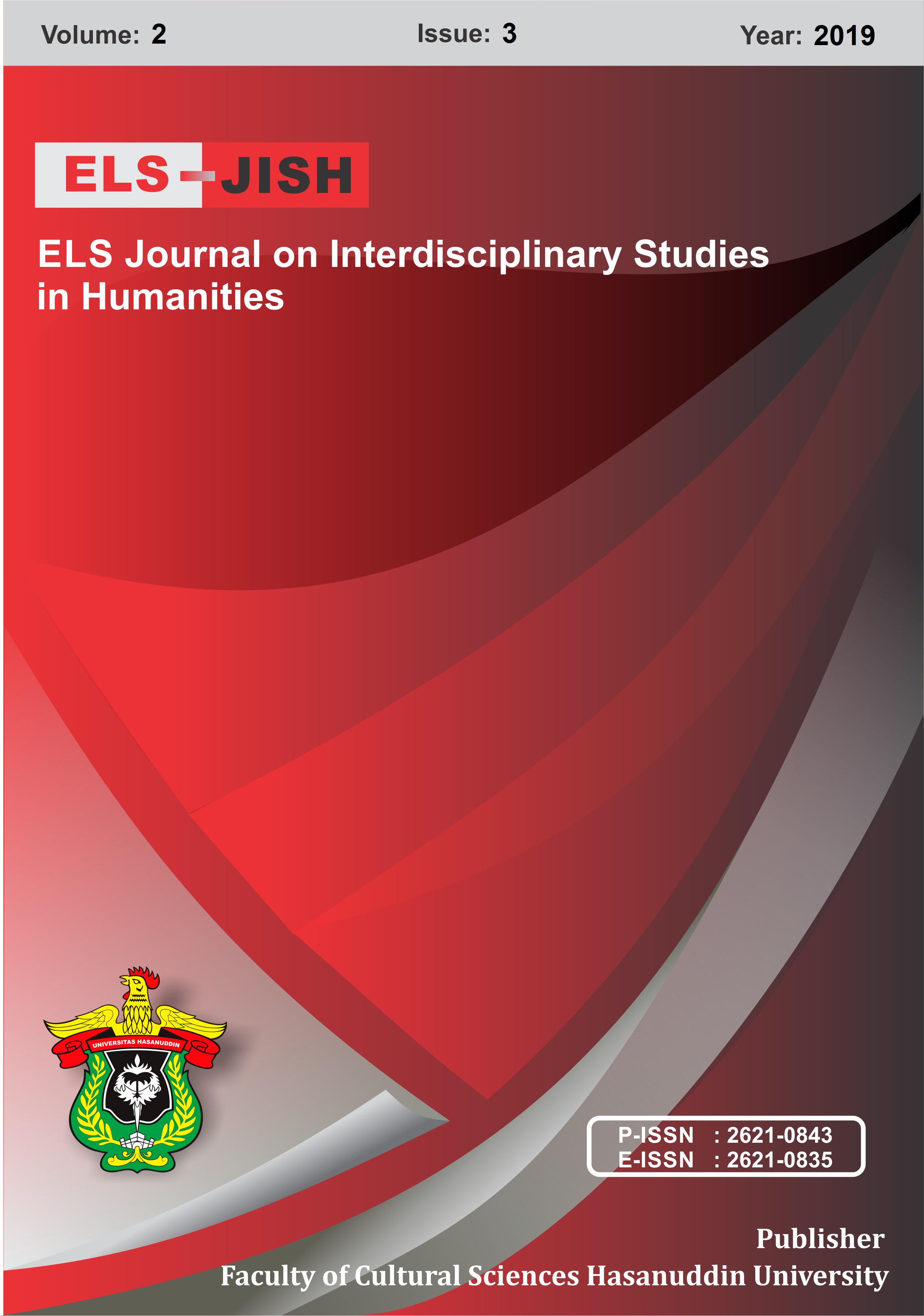Most read articles by the same author(s)
- Laode Muhammad Firman Guntur, Sadegh Pordanjani Rahimi, Exploring the Challenges of Reading Comprehension Teaching for English Proficiency Test Preparation Class in Indonesia , ELS Journal on Interdisciplinary Studies in Humanities: Vol. 2 No. 3 (2019): SEPTEMBER
- Marina Aiusheeva, Laode Muhammad Firman Guntur, Exploring the Strategies of Raising Motivation among ESL students in a non-English speaking context , ELS Journal on Interdisciplinary Studies in Humanities: Vol. 2 No. 3 (2019): SEPTEMBER
- Sadegh Rahimi Pordanjani, Impacts of the English Language Acquisition on Language Learners’ Culture and Identity: The Iranian EFL Contexts , ELS Journal on Interdisciplinary Studies in Humanities: Vol. 6 No. 4 (2023): DECEMBER
Similar Articles
- Nur Ijabah, Asdar Asdar, English Teachers’ Perspectives and Understandings Towards Critical Literacy Practice in EFL Context , ELS Journal on Interdisciplinary Studies in Humanities: Vol. 7 No. 2 (2024): JUNE
- Achmad Taqlidul Chair Fachruddin, Developing Interactive Instructional Modules for Core Principles of English Language Teaching , ELS Journal on Interdisciplinary Studies in Humanities: Vol. 5 No. 3 (2022): September
- Zahraini Fajri Nur, Sahril Nur, La Sunra, Analyzing Pre-Service English Teachers' Digital Literacy Skills in EFL Teaching , ELS Journal on Interdisciplinary Studies in Humanities: Vol. 6 No. 3 (2023): SEPTEMBER
- Sabri Thabit Saleh Ahmed, Bushra Thabit Ahmed Qasem, Problems of Teaching and Learning English as a Foreign Language in South Yemen: A Case Study of Lahj Governorate , ELS Journal on Interdisciplinary Studies in Humanities: Vol. 2 No. 4 (2019): DECEMBER
- Henny Dwi Iswati, Oikurema Purwati, Improving Students’ Critical Thinking through Guided Discovery Learning Method in Argumentative Texts Reading , ELS Journal on Interdisciplinary Studies in Humanities: Vol. 5 No. 4 (2022): December
- Nining Syafitri, The Correlation Between Lecturers’ Teaching Styles and Students’ Reading Habit Towards Reading Comprehension , ELS Journal on Interdisciplinary Studies in Humanities: Vol. 1 No. 1 (2018): March
- Rahmah Julianti, Sinta Dewi Anggung, Nur Ima, Undergraduate EFL Students’ Perspective on Critical Reading , ELS Journal on Interdisciplinary Studies in Humanities: Vol. 7 No. 2 (2024): JUNE
- Muh. Hasbi, Fitriyani Bakri, Abdul Halim, Enhancing Students’ Literacy Through Intellectual Diary: A Classroom Approach , ELS Journal on Interdisciplinary Studies in Humanities: Vol. 8 No. 1 (2025): MARCH
- Donard Bikorimana, Prosper Murwanashyaka, Assessing the Use of ICT in Teaching and Learning a Foreign Language in Rwandan Schools: An Example of English in Selected Secondary Schools of Rusizi District , ELS Journal on Interdisciplinary Studies in Humanities: Vol. 6 No. 4 (2023): DECEMBER
- Darmawan Labira, Yohanes San Salvador L. Gili, Felisitas Siano, EFL Learners of Pre-Service Teacher Programs’ Knowledge of Collocation and Their Perceptions on Collocation , ELS Journal on Interdisciplinary Studies in Humanities: Vol. 3 No. 4 (2020): DECEMBER
You may also start an advanced similarity search for this article.






